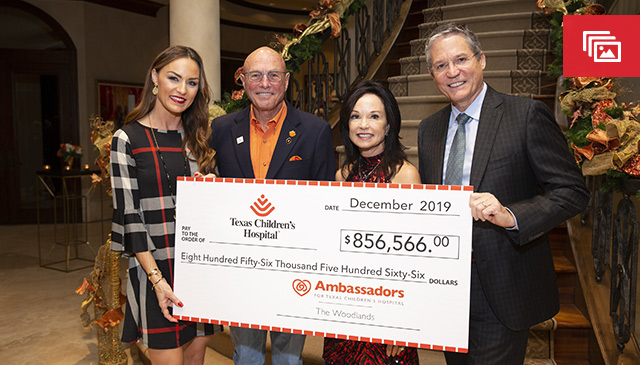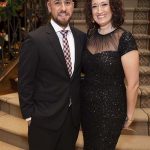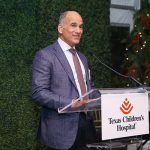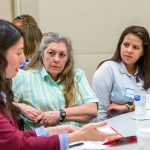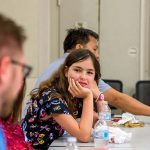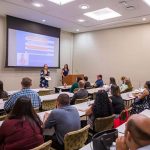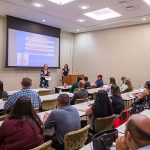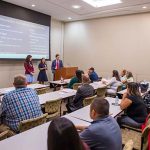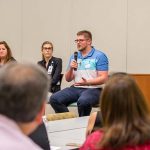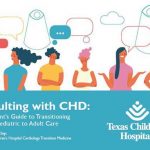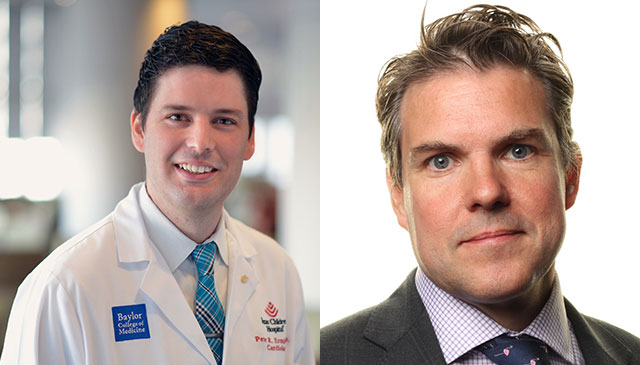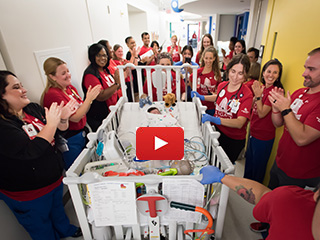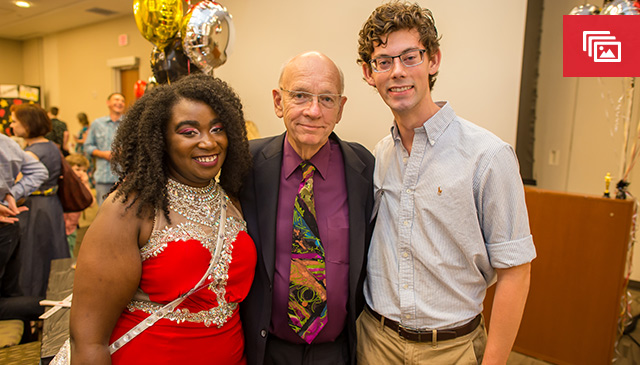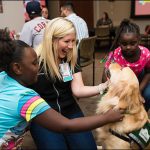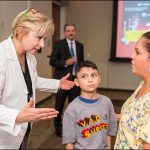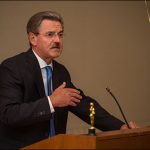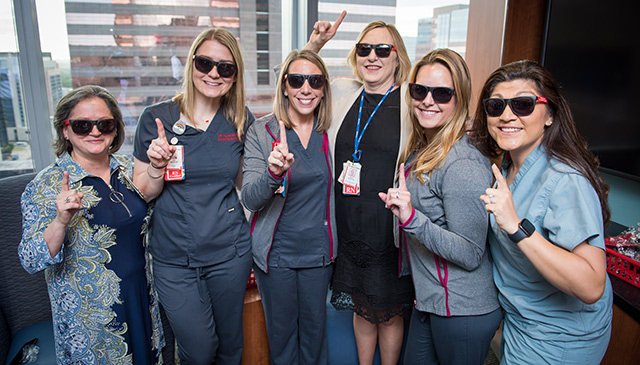December 16, 2019
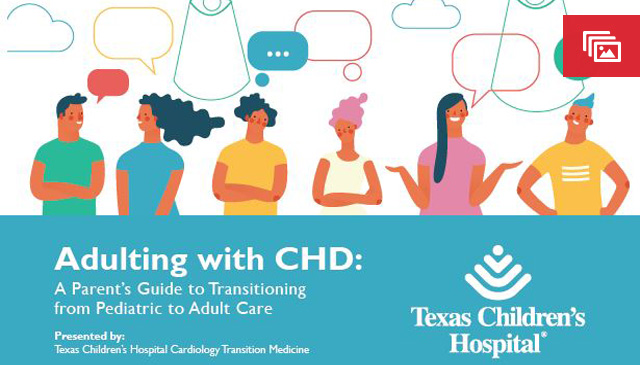
When Jackson Guyre was born with tetralogy of Fallot – a rare and complex heart defect – he was one of 40,000 children born with a congenital heart defect (CHD) in the United States each year. Today, thanks to the expert care he’s received at Texas Children’s Heart Center®, Jackson is an extremely active 15-year-old. He even runs half marathons.
He’s also now one of the hundreds of teenagers who have begun a new chapter in their journey with CHD – the transition from pediatric to adult care – through Texas Children’s Cardiology Transition Medicine Program.
Identifying the need
Though CHDs are the most common type of birth defect (affecting one in every 100 births), advancements in care have contributed to a steady decline in childhood mortality over the past two decades and helped more than one and a half million CHD survivors reach adulthood. Because a large proportion of patients are palliated and not fully cured, they are at risk for future health complications and even death. For this reason, they require lifelong care and disease management by physicians who specialize in taking care of adults with CHD.
However, lapses in care do occur. And according to several studies, including a 2018 study out of Texas Children’s Hospital and academic affiliate Baylor College of Medicine, and led by the Cardiology Transition Medicine Program’s medical director Dr. Keila N. Lopez, there are serious disparities in the care provided to the growing adolescent CHD survivor population, involving poor transition from pediatric to adult-centered care. It was a problem Lopez had seen firsthand.
“When I became a cardiology attending in 2012, I was seeing a lot of pre-teen and teenage patients who, universally, didn’t know anything about what was going on with their heart,” Lopez recalled. “I realized there was no way these kids were going to successfully transition to adulthood if they didn’t know what their condition is and weren’t able to answer basic questions about their health or what to do in the event of a medical emergency.”
Additionally, Lopez saw patients were being transferred to adult care without being properly transitioned first, which only exacerbated the problem. She noted, “Transition and transfer of care are not the same thing. Transition is the shift in the responsibility of health care management from the parents to the patient and is a gradual process that takes several years. Transfer of care is the movement of patients and their care from one medical facility or provider to another. Patients often find transfer of care much harder if a solid transition program has not been a part of their preparation.”
It was a passion for the adolescent CHD population and the obvious clinical need for a better, more comprehensive approach to transition cardiology care that drove Lopez to put together a business proposal that addressed why Texas Children’s could be the ideal place to pilot a cardiology transition program.
From the ground up
In the first year, the small but mighty team – made up of Lopez; cardiology transition coordinator DK Lovick, RN; and social worker Nicole Broussard, LCSW – began developing the program from scratch, first by surveying adolescent CHD patients, their parents or guardians, pediatricians, providers in each service at the Heart Center, and Texas Children’s Adult Congenital Heart Disease (ACHD) team, to find out things like what patients typically know about their condition, medicines, insurance, etc.; where the gaps in knowledge usually are; and what other factors patients struggle with (i.e., coping with anxiety or depression).
“There was a lot of trial and error, and lots of focus groups,” Lovick said. “We were asking providers what patients and families need to be better at, as far as really understanding and managing their condition, and asking the patients and families what they felt they needed to know more about. We discovered a critical piece of the puzzle: most of them wanted an individualized learning plan.”
At the heart of the process, and the primary method for information-gathering, assessment, and development of individualized learning plans, is motivational interviewing, which involves empathetic listening, positive reinforcement, and providing prompts based on the patient’s values and feelings to help them find the motivation they need to change behaviors.
The result is an approach to transition care built on shared decision-making that motivates the patient to become the captain of their care team, with the parent or guardian as co-captain, and their doctor as coach.
Helping patients take the lead
The transition journey typically begins when a patient is 14 years old with a preliminary visit that is used as an introduction. They meet the team and learn about the process, the individual learning plan, and what the expectations are for the process of transition. The team also tells the patient about opportunities such as meeting other teens with CHD, volunteering or mentoring. During this visit, parents or guardians provide the team with information about their understanding of the patient’s condition and trajectory, the patient’s knowledge of basic health skills (e.g., carrying health information with them, knowing their doctor’s phone number), and whether the patient might be dealing with a learning disability or psychological concerns.
When a patient is 15, they have their first official visit with the cardiology transition team by themselves. This is the first step in helping the patient take more ownership of their care journey. Using motivational interviewing, the team administers transition readiness and CHD knowledge assessments and begins individualized CHD education and health care skills training. This begins to prepare the patient to know and understand their condition, and to learn how to communicate health care information to providers or to someone in the case of an emergency. Patients have a similar visit at 16 years old.
At each of these appointments, the team also asks the parent or guardian what they think the patient needs to work on. Once all the information and responses have been gathered, the cardiology transition team begins building the patient’s learning plan and setting goals to work on before the next visit using CHHATT, the Congenital Heart Health Activation Transition Tool.
This tool, developed entirely by the Texas Children’s cardiology transition team, takes all the information reviewed in the appointment and collates it in a format that will help the patient learn, retain and understand how it fits into the larger picture of their long-term care. This includes:
- A three-sentence summary of the patient’s personal information, details of their CHD and what an emergency situation looks like
- Basic self-management information about such things as medications, high-risk behaviors, traveling tips, and everyday activities and restrictions
- An outline of their trajectory and lifelong management, including possible long-term issues, reproductive risks and genetic risk of passing on the condition, and basic insurance information
The CHHATT is reviewed at all subsequent meetings (including at 17 and 18 years old). After a review with the patient, the patient will then teach their parent or guardian what they’ve learned. If parents ask a question, the patient can use the tool as a prompt to help answer. If the patient is able to repeat the information in the CHHATT twice in a row with minimal or no prompting, that usually means a patient is prepared to transfer to adult care. After their 18th birthday, patients will also have an adult planning visit with the transition team and their pediatric cardiologist, where an ACHD physician is officially identified as their next cardiologist, advance directives are discussed, insurance options are reviewed, and a transfer summary (comprehensive summary of pediatric cardiac care) is completed.
The cardiology transition team also helps prepare families of patients who may not be able to live independently in the future or have some developmental delay. In these cases, the team works with the patient so that they can, if they’re able, at least repeat their three-sentence summary from CHHATT. The team also helps enter the patient’s information in their medical app on their phone, or will encourage the parent or guardian to get a medical ID bracelet. The team may also start walking the family through guardianship or supported decision-making that may happen in the future, sometimes referring the family to Texas Children’s Medical-Legal Partnership, a collaboration with Houston Volunteer Lawyers. When patients with special needs turn 17, in addition to pointing them toward important legal information, the team also provides them with information on numerous resources and programs available, and community organizations able to offer assistance.
Access through technology
In addition to publishing all original materials in Spanish, the Cardiology Transition Medicine Program also uses special real-time translation technology to make the program accessible to non-English speakers. The program was also the first at Texas Children’s to create an outpatient ambulatory education template for EPIC. Providers are able to simply click on a tab to see who was educated, what they learned, what the response was, and if follow-up is needed. Additionally, the transition team is hoping to expand its reach to satellite clinics in the future through the use of telemedicine. And currently, Lopez is working with the Center for Collaborative and Interactive Technologies at Baylor College of Medicine to develop a mobile app that will be the first of its kind for CHD. The app – a project supported by the National Institutes of Health – will act as a portable medical summary and will include information for the patient’s specific CHD, what surgeries or repairs they’ve undergone, diagrams, and more.
Learning to “Adult” with CHD
In addition to presenting about the program at major conferences and symposiums on a national and international level – including the Adult Congenital Heart Association (ACHA) and America Heart Association – the Cardiology Transition Medicine Program also hosts events at Texas Children’s to raise awareness around the need for more comprehensive cardiology transition care, to share the methodology, and to provide information and resources.
One example was the “Adulting with CHD” symposium, which was held this past summer at Texas Children’s Pavilion for Women. The event was staffed by more than 30 volunteers, all of whom were ACHD patients and connected to the program through relationships with outside CHD groups. Many of the volunteers acted as table hosts to facilitate conversations with the more than 40 attendees, including CHD patients and parents. One of those parents was Jackson Guyre’s mom, Emily.
At her table were other families with children who had been born with tetralogy of Fallot, and adult patients who had lived through the diagnosis.
“As a parent of a child with a congenital heart condition, it’s hard to think about them being an adult because the parent is the one who checks all the boxes for so long,” Emily said. “Ahead of Jackson’s first appointment with the Cardiology Transition Medicine Program, it was so helpful to learn about the program and to meet and see adults who have the same condition who are now living normal lives.”
And now that Jackson has attended his first appointment with the team, Emily has seen the program’s value firsthand.
“We thoroughly enjoyed our first visit with the cardiology transition team,” she said. “It gave my husband and me a chance to sit back and listen to how much Jackson knows about his condition and how to maintain a healthy lifestyle. We appreciate Texas Children’s for creating this program and introducing our family to it as we transition to Jackson’s teenage years. It proves they really care about both his medical condition and his emotional needs, and it gives us all the confidence necessary as he prepares to move to his adult heart team.”
Another attendee of the symposium was Angel Olvera, Executive Vice President of Sales at Patient Educational Media Systems. Olvera and his associate, both parents of children with CHD, founded the company to provide CHD and ACHD education and to raises awareness through film, innovative media, and streaming platforms. As part of their research for an upcoming film about cardiology transition care, they had been traveling the country visiting several heart programs.
What Olvera learned at the “Adulting with CHD” event left quite an impression.
“I’d heard so much about Texas Children’s Cardiology Transition Medicine Program and actually knew people who’d moved to the area specifically to be closer, and now I understand why,” Olvera said. “From what we’ve seen, Texas Children’s cardiology transition program is one of the best in the country by far. A lot of programs have pieces of the puzzle, but they lack a structure. Texas Children’s has a continuous, measured process. Patients and families always know where they are and what they need to improve toward taking ownership of their condition. It was really impressive.”
One of Patient Educational Media Systems’ projects, “The Heart Within,” is currently available on Amazon Prime. The new film on transition medicine will be released in February 2020.
Looking ahead
It’s been three and a half years since the pilot program launched. The concept has been proved, and the success has been undeniable. A study conducted by Dr. Lopez and presented at the American Heart Association assessed Texas Children’s cardiology transition program and demonstrated that with each successive visit to the cardiology transition team, there were reduced lapses in care, and each successive visit made for even more reduction in gaps in care. This demonstrable success for a cardiology transition program has never previously been reported in the United States.
“The growth we’ve seen has been tremendous,” said Broussard. “Currently, we’re seeing more than 700 patients a year. We’re constantly affirmed by families, patients and providers, who see that their patients are doing well. The more people find out about us, the more the demand for our services grows. And the ACHD patients with whom we work are constantly telling us they wish they’d had this resource available to them when they were teens, and that we’re on the right track.”
Added Lovick, “The key to our success, and the reason why the process works, is that we listen – to our patients, their parents, and the providers. They all told us what they needed and how it needed to be delivered. We’re looking forward to continuing to grow outside of the services we currently work with and delivering this much-needed resource to even more patients.”
Learn more about Texas Children’s Cardiology Transition Medicine Program, part of the nation’s No. 1 heart center, according to U.S. News & World Report.
For information about volunteering at Texas Children’s Heart Center or at Cardiology Transition Medicine Program events, please contact DK Lovick at DKLovick@texaschildrens.org.
